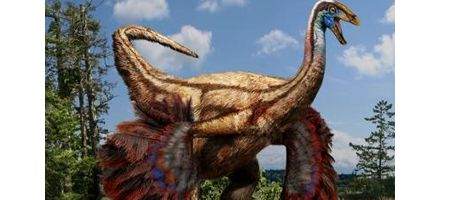The reason herbivore dinosaurs got so big was their environment, not their diet, researchers say.

Many believe that the shift from meat-eating to a vegetarian diet favored large size because larger digestive tracts let dinosaurs to extract more nutrition from high-fiber, low-calorie food.
This view was supported by the fact that within three groups of giant feathered theropods from the Cretaceous period, the biggest specimens were also the plant-eaters.
But a team at North Carolina State University decided to test this. They estimated body mass for 47 extinct species of feathered dinosaur, representing three major groups that abandoned a strictly meat-eating diet – ornithomimosaurs, oviraptorosaurs and therizinosaurs.
All three groups evolved to a gigantic size: the largest oviraptorosaur weighed over 7,000 pounds, and the biggest ornithomimosaurs and therizinosaurs over 13,000.
“The largest feathered dinosaurs were more than 100 times more massive than your average person,” says Professor Lindsay Zanno.
“The reality is that for most of us, it is downright difficult to imagine a feathered animal of gigantic proportions.”
The researchers found that average body mass did increase in these groups over time. And to test whether this was down to natural selection, they tried out different evolutionary models on the data, looking to see which model best described what actually happened.
What they found was that these theropod groups seemed to be experimenting with different body masses as they evolved, with some getting bigger, and others smaller. In other words, there was no clear-cut reason to get big, with size seeming to provide no overwhelming advantage.
“Results of our study don’t rule out diet as affecting body mass, but do seem to indicate that fluctuating environmental conditions over time were trumping the benefit of becoming a giant,” says Zanno. “The long and short of it is that for plant-eating theropods, bigger wasn’t always better.”





